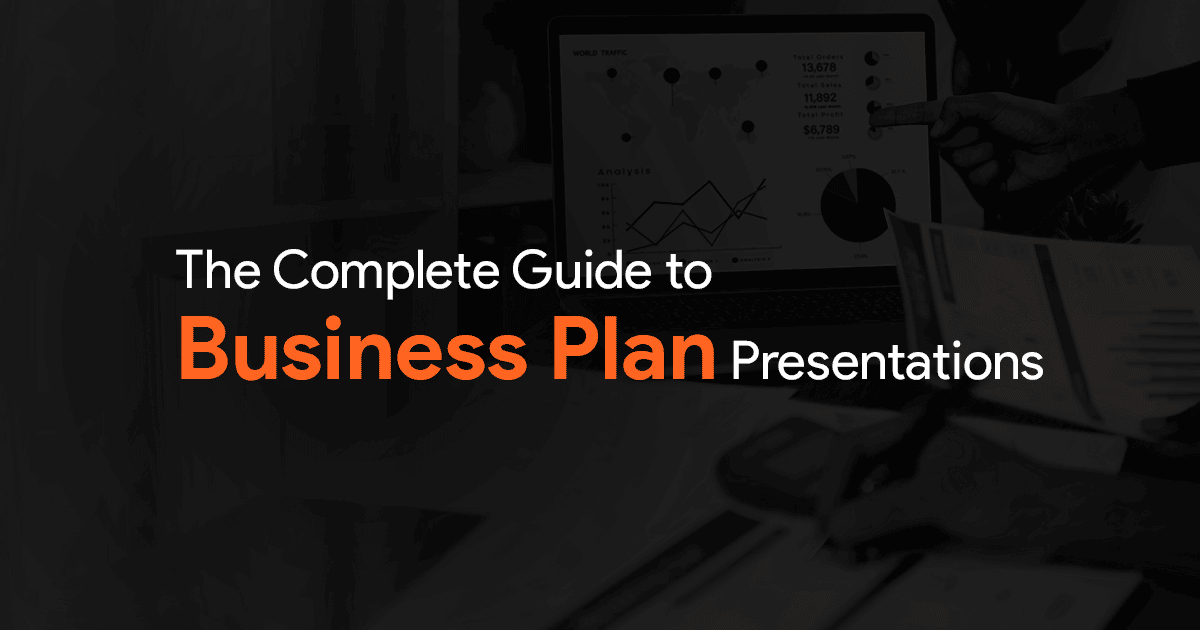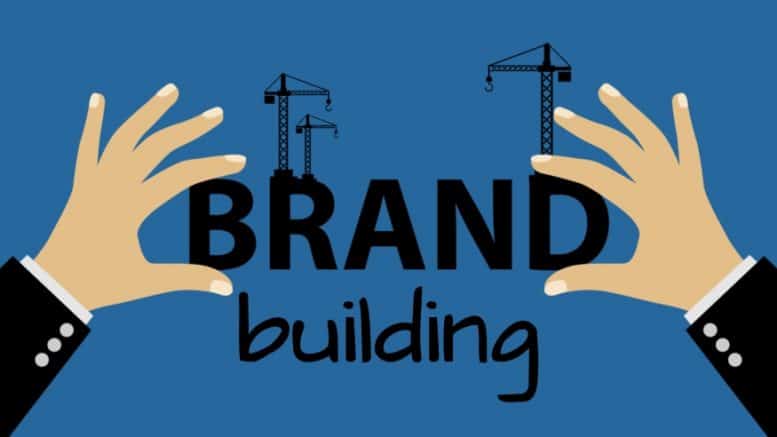- List of contents:
- What is a Business Plan Presentation?
- How Many Slides Does Your Business Presentation Need?
- Basics of Creating a Business Plan Presentation
- How to Create a Business Plan? – Key elements of a business plan.
- 10 Slides You Need in Your Business Plan Presentation
- How to Create a Business Plan with SlideBazaar?
Business Plan Presentations – The Complete Guide [with Templates]

Does a perfect business plan presentations exist? Yes, it does, and this guide will help you create them. Worry not, it is no rocket science. You can craft one perfectly if you have a logical picture of the business idea in your mind.
You may feel overwhelmed while trying to put this idea into an actual business plan presentation. So, in this detailed guide, we will discuss everything related to easing the creation of a business plan presentation and give you some amazing bonus templates to work on.
The use of visuals makes the presentation of a business plan interesting and gripping. We will tell you how to leverage this in business plan presentations, the number of slides that would be ideal for this, the contents on each slide, and some easy steps to create a business plan presentation with SlideBazaar.
Just keep calm. We have all the resources for you to create a killer business plan presentation in one place. Let’s get started!
List of contents:
- What is a Business Plan Presentation?
- How Many Slides Does Your Business Presentation Need?
- Basics of Creating a Business Plan Presentation
- How to Create a Business Plan? – Key elements of a business plan.
- 10 Slides You Need in Your Business Plan Presentation
- How to Create a Business Plan with SlideBazaar
What is a Business Plan Presentation?
Let’s start with what a business plan is. A business plan is a formal document that clearly defines your business goals, mission, strategy, the products and services it offers, an action plan with well-defined goals, and everything that concerns operating a business.
The business plan exists to:
- Illustrate the future financial performance of the business, along with highlighting the economic situation. This can give great insights to all the stakeholders.
- Identify all the possible risks that could affect the business in its journey and lay out foolproof strategies to handle them.
- Understand & derive information about market trends, competitor behavior, and customer requirements to lay out and prioritize business objectives.
- Give accurate information that will help in budgeting.
A business plan presentation is a combination of all this information put together well to communicate to a specific audience clearly and concisely. This definitely doesn’t mean you have to use a wordy document to convey these key points. Instead, you can use presentations with compelling visuals and apt information to give your investors a clear idea of the business.
How Many Slides Does Your Business Presentation Need?
There is no hard and fast rule that a presentation for a business plan should be limited to a specified slide number range. It needs to have sufficient information about all the key aspects related to the business. But, for someone who’s creating a business plan presentation for the first time, we suggest starting with Guy Kawasaki’s 10-20-30 rule. It is a very simple rule which everyone can execute. So, this is the rule: 10 slides, 20 minutes, and 30 font sizes.
Basically, the rule says that you can start with an average of around 10 slides and explain it to your audience within 20 minutes (because you don’t want to bore them or test their attention span). Also, use an optimum font size, like 30, to keep your audience hooked.
Now, you could even follow the 9-minute rule, which inherently applies to salespeople but can be used by presenters too. This implies you have to try to deliver the presentation in a short and effective manner and grab the audience’s attention with it. You can execute these methods effectively by keeping 2-3 slides per minute.
Anything beyond 10-12 slides is a strict no-no. It means you are forcing a lot of information on your audience in one go. Your audience wouldn’t want that. So, stick to the numbers.
Basics of Creating a Business Plan Presentation
You need to keep certain fundamentals in mind before preparing a business plan presentation:
Your message needs to be clear and concise:
The most important factor in preparing a business plan presentation is to keep it clear and concise. This will ensure that the messaging is presented coherently. Such concise messaging will help you deliver an equally precise presentation explained in a few sentences. Also, stick to the basics: use simple language.
The presentation slides need to be easy to read and understand:
Good readability and ease of understanding the contents of the slides are very important to grab your investor’s/audience’s attention. Here are some ways to boost the readability and visual effectiveness of your presentation.
Choose fonts that are easy to read:
Fonts matter. A lot. You can choose fonts like Garamond, Helvetica, and Gill Sans on your slides. These fonts go well with business plan presentations. Also, use a font size that’s readable like 30 points, which is a good benchmark size to stick on to. You can also adjust the font size to create a visual flow that navigates viewers’ attention.
Pick a color contrast that’s easy on the eyes:
Bright colors can be a little hard to look at. You can choose subtle colors or a combination of subtle and bright ones. Maybe you can just allocate 10% of the total colors used (on the presentation) to a bright shade and stick with a subtle color for the rest 90%.
Use minimal text:
This can be a bit hard while you are trying not to miss any piece of key information. The best way to cut down on those extra words is by diligently reading through each section of the slide. Here’s what you can do. Start by going through each word and analyze if the use of that word is necessary for that sentence or slide. So, this way, you ensure that no unnecessary text is used.
Pay attention to the visual elements in each slide:
Another basic is not to overdo your design elements; use them smartly. You don’t have to mechanically add some thumbnail images and icons to each slide and stop it right there. Just rethink every visual element you place on the slide; omit it if it isn’t necessary and keep the ones that can actually make an impact on the slide.
How to Create a Business Plan? – Key elements of a business plan.
Executive Summary
An executive summary is a brief you give your audience by throwing light on what is fascinating and great about your business model along with highlighting its products or services. This should ideally be placed in the beginning although we suggest you think and work on that part only after finishing all the slides. Remember to keep it concise and engaging to the audience. And you can keep it that way by working on it at the end rather than in the beginning.
Company Profile
Laying out the company profile is an important element in business plan presentations. Here are a few details that you shouldn’t miss while preparing the company profile:
- Company history
- Overview of the company
- Mission statement
- Key resources
- Business contact information
- Products or services
- Location details
- The market you serve
- Your key customers
- The customer issue you seek to solve
Remember, you don’t have to list this information down in any particular order, instead, you can nicely represent it using infographics. This way, it will be easy to comprehend for your audience since the information is presented in a compact form rather than in paragraphs.
Market Analysis
Market research and market analysis is the best way for you to find enough information and specifics about your target market. This can clearly define the target audience, size, customer segments, and needs all in one go.
While you are doing the market analysis, pay close attention to all your competitors, understand the influence they have in the market, their strengths and shortcomings, how their presence can affect you, their products and services, and all the way up to their marketing strategies.
You can better understand these via some of the following visual techniques.
1. Customer Profiles
This will give the viewer an effective summary of everything about the customer right from their demographic details, skills, responsibilities, wants needs, to favorite brands, etc.
2. Perceptual Map
A perceptual map will help you understand how your potential target audience sees the brands or products of your competitors. Having this will give a better picture of your product or service’s competitive position. More importantly, these would make even more sense through the survey data at your hand.
3. Porter’s Five Forces
Porter’s Five Forces is a great tool to judge your business based on its competitive strength and position against its competitors. This will help you assess if your new product or service will be profitable or not.
4. SWOT Analysis
The most popular tried & tested way to determine the strengths and weaknesses of your competitors, the opportunities and threats they pose to your industry, and identify the capabilities of your own business, is to carry out a SWOT analysis.
5. PEST Analysis
PEST is the abbreviation of Political, Economic, Socio-Cultural, and Technological factors. This is a great way to analyze the external factors affecting your market and how they will have an effect on your business. This can be used to support you while developing a marketing strategy and a risk management plan.
Marketing and Sales Strategies
Once you have enough information about your market, target customer, and your competitors, it is time to lay out a marketing and sales plan. When your marketing strategy is being set, factors like marketing or communication channels, marketing goals, marketing budgets, resources, etc. also need to be addressed. Similarly, the sales strategy also needs to account for factors like sales targets, sales tools, resources, etc.
Another way to go about this is to try using mind maps to see and understand the data better. You can either use two separate mind maps for marketing and sales or use one for both.
Marketing and Sales Plan Template
Maintaining separate templates for sales and marketing can be useful in analyzing and streamlining data. These are critical tools for sales and marketing teams. You can view important pieces of information like data charts, change timeline templates, feature images of products, and more in one place.
Organizational Structure and Management
The clarity in the organizational structure and management is paramount for any business to thrive. You can start creating an organizational structure and management plan by listing down the key personnel involved in your organization. Also, jot down their expertise along with it.
You can make use of an organizational chart to illustrate team members, their roles, and their skills in one place. These charts will help you see and define the hierarchy of your organizational structure very well.
Services and Products
This is a vital section that will list and explain all the services or products that you offer. It should also ideally contain information on how these services/products benefit the customers. The following visualizations can be used to better demonstrate this section to your audience.
1. Product Canvas
A product canvas is a great way to map, design, and describe your product strategy. This will include all relevant bits of information regarding a product like your target audience, the important product features, and the tasks completions required to build the product.
2. Value Proposition Canvas
A Value Proposition Canvas will act as a tool to confirm if your product/ service fits the requirements of your potential customer. It will let you analyze the value your product/service would be able to deliver, the customer problems your business can solve, the type of job that your customer is able to finish with our business, the customer needs that are fulfilled by the business, the products offered in various customer segments, etc.
Financial Plan
A financial plan section is crucial in a business plan presentation. This becomes even more relevant when you are trying to present in front of your investors.
These contain both historical data about the company and financial projections too. This means it will have all information about cash flow statements, profit and loss statements, income statements, etc. in one place along with the progress that your new product could bring to the business. This can be further extended to asking for funding requirements while pitching a new product to investors.
You could make use of a digital database to store your financial information and link them all up to a mind map. Anyone who’s interested in specific financial data can refer to the linked resources while viewing the mind map.
10 Slides You Need in Your Business Plan Presentation
Slide 1: The Title Slide
This is a no-brainer that your very first slide on the business plan presentation should make a great first impression. It can have your business’s name, slogan, and logo along with your (the presenter) name in it. You use powerful imagery that will give a glimpse of the business idea there itself.
Slide 2: The Problem Your Business Solves
Introduce the pain point that the business is trying to solve in the second slide. You can make it interesting by telling a story while quoting facts to make it interesting. You can give focus on the design of these slides by using a few words and more memorable graphics to highlight facts.
Slide 3: Your Business’s Solution
Right after discussing the customer pain point, it is time to give a solution to it – your business idea. This slide needs to be on point and shouldn’t carry paragraphs. You can try using diagrams or sketch to explain your business solution.
Slide 4: Your Pricing Plan
Once you have laid out the business solution, you will have to convince your investors or audience that what you came up with is an economically feasible one. Use simple-to-digest pricing charts for the business plan instead of listing them all one below the other.
Slide 5: Business Operations Information
The audience now needs to know deeper about your operating structure. You can give information about where the business will be headquartered, all info about the staff, the equipment that will be used, and more.
Slide 6: Your Marketing Plan
Marketing a business is of supreme importance. You should have a solid plan in place to market your business and it must be convincing to the audience. You will have to mention each channel you plan to promote and the plan of action on each should be mentioned.
Slide 7: Industry Overview
An industry overview is nothing but competitor analysis and you need to have a separate slide for it in the presentation. Just keep in mind that this slide should be made from a positive angle. You should identify and highlight what your competitors are doing in the market without bad-mouthing them. Your job is to present what you are doing well (discuss your USP) in comparison with your competitors. You can use charts or even bullet points to be precise.
Slide 8: Financial Projections
This slide must be able to answer everything about the financial projections that you see for the next 3 years and 5 years to come. It doesn’t end there; you will have to clearly indicate how you reached those numbers too.
Slide 9: Your Team
The team who will be involved in building the business is equally important as its idea. So, you will have to mention the important team members who will build this.
Slide 10: Concluding Slide
The final/concluding slide must contain something to induce a sense of urgency in the audience and it is the best place to give your contact details here. Moreover, you will have to convince people that now is the right time for the business to enter the market.
How to Create a Business Plan with SlideBazaar?
Creating a business plan presentation is pretty simple with SlideBazaar. They’re a set of basic steps to be followed and then you’re ready to use it. The first step is to get to the SlideBazaar website and sign up or log in by clicking on the Login button placed in the top right corner. Head over to the template search bar and feed in the keywords related to the templates that you are planning to create. This action will lead you to a page full of search results based on the keyword you fed. The keyword is supposed to convey the theme you wish to pick. This could be anything from a specific marketing cum sales template to a complete business plan template.
Now, go ahead and choose a template from the search result to download it. You can start editing by adding your details on the title slide. Continue to the other slides and customize them based on your business, and add, remove or beautify the slides with icons, illustrations, images, and more. Pay attention to leaving ample breathing space on the slides. You can add more slides only if it is necessary. This will help you create a killer Business Plan with SlideBazaar.


